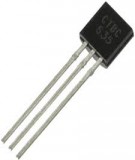
PART zyxwvutsrqponmlkjihgfedcbaZYXWVUTSRQPONMLKJIHGFEDCBA
5
RUNNING
A
NETWORK
Networks and Telecommunications: Design and Operation, Second Edition.
Martin P. Clark
Copyright © 1991, 1997 John Wiley & Sons Ltd
ISBNs: 0-471-97346-7 (Hardback); 0-470-84158-3 (Electronic)

27
Telecommunications Management
Network
(TMN) zyxwvutsrqponmlkjihgfedcbaZYXWVUTSRQPONMLKJIHGFEDCBA
The goal
of
the ‘telecommunications management network’ or ‘TMN is to provide for consistent
and efficient management of complex telecommunications networks. The TMN model describes
the basic operating and management functions which a network operator has to conduct and the
standard interfaces to be used between network components and network management systems.
Key elements
of
the TMN concept are the management model, the Q3-interface and the zyxwvutsrqponmlkjihgfedcbaZYXWVUTSRQPONMLKJIHGFEDCBA
CMIP
(common management information protocol). We discuss them all in this chapter, which in
parallel gives an insight into the problems
of
managing complex networks. At the end, we also
briefly discuss the SNMP (simple network management protocol), which is used as an alternative
to CMIP in many corporate and Internet/router networks.
27.1
THE
PROBLEMS
OF
MANAGING
NETWORKS
Figure 27.1 illustrates a typical telecommunications network of today. It provides a
valuable insight into the complexity of managing even relatively simple telecommunica-
tions networks. The figure shows a simple data network composed of four different
component types, but each provided by different manufacturers. They each have
independent zyxwvutsrqponmlkjihgfedcbaZYXWVUTSRQPONMLKJIHGFEDCBA
network management systems
(NMS).
Each NMS is capable
of
monitoring
and controlling every aspect its manufacturer’s network equipment, but is incapable of
monitoring or controlling other manufacturers’ devices. The component types shown are zyxwvutsrqponmlkjihgfedcbaZYXWVUTSRQPONMLKJIHGFEDCBA
0
data switches, managed by a ‘proprietary’ network management system, NMSl
0
SDH (synchronous digital hierarchy) transmission technology (links some of the
switches and is managed by NMS2)
0
TDM (time division multiplex) transmission technology (links some of the switches
and is managed by NMS3)
477
Networks and Telecommunications: Design and Operation, Second Edition.
Martin P. Clark
Copyright © 1991, 1997 John Wiley & Sons Ltd
ISBNs: 0-471-97346-7 (Hardback); 0-470-84158-3 (Electronic)

478 zyxwvutsrqponmlkjihgfedcbaZYXWVUTSRQPONMLKJIHGFEDCBA
TELECOMMUNICATIONS MANAGEMENT NETWORK (TMN) zyxwvutsrqponmlkjihgfedcbaZYXWVUTSRQPONMLKJIHGFEDCBA
0
direct leaselines provide for remaining switch links. These are supplied by another,
public telecommunications network operator, for which there is no management
system available to our operator
A simple line failure is illustrated in Figure 27.1. An SDH connection has failed. The
result is
a
plethora of alarms generated by both NMSl and zyxwvutsrqponmlkjihgfedcbaZYXWVUTSRQPONMLKJIHGFEDCBANMS2. The network status
screens of both NMS are likely to light up like Christmas trees in all sorts
of
colours.
The SDH network management system, NMS2, will pinpoint the root cause of the
problem, probably with the appropriate link alarm indicated in red. Meanwhile, NMSl
is also showing red alarms, because one of the adjoining switches has a malfunctioning
port and the other adjoining switch is isolated. Other switches may report ‘yellow
alarms’ as connections to the isolated switch have been lost. The exact cause of the
problem, however, will not be clear from the information that appears on NMS1. Un-
fortunately, this is likely to lead to a certain amount of confusion and wasted effort. zyxwvutsrqponmlkjihgfedcbaZYXWVUTSRQPONMLKJIHGFEDCBA
.
.
.
.
.The human operator managing the SDH network naturally starts about his
repair. . . meanwhile. . .
.
.
.His colleague, the switch network manager watching the screen of NMSl is
unaware of the root cause. Instead he addresses what appears to him to be the urgent
problem of the isolated switch. Perhaps there has been a power failure? Maybe the
switch needs to be restarted?. .
.
He calls his colleague at the isolated switch site. Having
done
so,
he is able to rule out a local cause.
So
next he calls his SDH colleague and, of
course, discovers the most likely cause of his
own
alarms. He hands over responsibility
and starts to get on with something else.
But, you might ask, why did the switch manager not call the SDH manager to start
with? The answer is that he is unable to determine easily the single cause of a lot of
alarms. He must therefore address each alarm in turn, diagnosing the most critical
alarms first.
Considerable effort may go into checking each alarm and concluding a single root
cause. Only afterwards can the human network manager truly rest in peace as his SDH
Q
alarm
$(
line
failure
Figure
27.1 A typical telecommunications network

NETWORK PROVISIONING zyxwvutsrqponmlkjihgfedcbaZYXWVUTSRQPONMLKJIHGFEDCBA479 zyxwvutsrqponmlkjihgfedcbaZYXWVUTSRQPONMLKJIHGFEDCBA
Figure
27.2
Recognizing that a network is like spaghetti and the alarms are like Christmas
tree lights
colleague gets on with the job of network zyxwvutsrqponmlkjihgfedcbaZYXWVUTSRQPONMLKJIHGFEDCBA
restoration.
Afterwards, despite his clear
conscience, the alarms on his own screen do not go away.. zyxwvutsrqponmlkjihgfedcbaZYXWVUTSRQPONMLKJIHGFEDCBA.
So
when another fault
arises before the first is cleared, the diagnosis becomes more confused and difficult as
the alarms inter-mingle.
In real networks, many simultaneous faults are likely to be present at any point in
time, even if they are of a non-critical nature. Working out which alarm belongs to
which bit of network equipment is a complex task, like finding the knot in spaghetti!
(Figure 27.2).
27.2 NETWORK PROVISIONING
Provisioning of new lines in the network is just as complex and labour-intensive as fault
finding. Imagine trying to set up a single permanent connection (say a frame relay PVC)
across the networks of either Figure 27.1 or Figure 27.2. First someone must sit down
to ‘design’ the connection (work out the path), allocate ports and network addresses.
Next, each of the TDM and telephone switch ports need to be programmed. The SDH
links must be configured. The leaselines must be ordered. Finally comes the hope that
all the installation staff in the chain do their jobs on-time and accurately, otherwise
the connection fails an end-to-end acceptance check. It would be preferable to define
the desired end-points of the connection and let a computer coordinate and execute the
rest. Enormous saving in effort is possible, together with higher quality and faster
installation work.
. . . And by being able quickly to trace the complete path or trail of a single connec-
tion through the network (e.g. Figure 27.2) using sophisticated computer network
management tools, operations staff can more quickly diagnose faults and resolve

480
TELECOMMUNICATIONS MANAGEMENT
NETWORK
(TMN) zyxwvutsrqponmlkjihgfedcbaZYXWVUTSRQPONMLKJIHGFEDCBA
problems if they arise later. Furthermore, by computer ‘filtering’ of the alarms, it may
be possible to reduce the ‘Christmas tree lights’ to the one or two alarms which are most
likely to be the direct cause of a problem. This would greatly help our fault-correcting
friends in Figure 27.1.
27.3
UMBRELLA NETWORK MANAGEMENT SYSTEMS
A
number of network operators, computer manufacturers and software developers
started during the 1980s to develop the idea of zyxwvutsrqponmlkjihgfedcbaZYXWVUTSRQPONMLKJIHGFEDCBA
umbrella network management
systems
(Figure 27.3). These were to be powerful network management systems capable of
controlling the network as a whole. They would be able to correlate and present the
various pieces of information from individual
network element managers zyxwvutsrqponmlkjihgfedcbaZYXWVUTSRQPONMLKJIHGFEDCBA
(NEM)
thus
removing this arduous coordination task from human operators. (Note: NMS1, NMS2
and NMS3 of Figure 27.1 are
network element managers
because they are network
management systems capable only of managing a particular type of
network element.)
A
single command issued to the umbrella system by a human operator would be all
that is needed to configure a new trunk between any two of the switches of Figure 27.1.
The umbrella system managers see to it that the plethora of comands needed to be
issued to the individual network elements are generated (one command to configure a
new port at one switch, a second command for the second switch, a third command to
the
SDH
NMS to establish the transmission path, etc.).
For the umbrella network management system to work properly, a defined, standard
interface between the umbrella network management system and each of the
network
element managers
is needed. Over this interface the umbrella network management zyxwvutsrqponmlkjihgfedcbaZYXWVUTSRQPONMLKJIHGFEDCBA
umbrella network
management system





![Biến Tần FR-A700: Sổ Tay Hướng Dẫn Cơ Bản [Chi Tiết]](https://cdn.tailieu.vn/images/document/thumbnail/2019/20191130/cac1994/135x160/1741575103503.jpg)
![Xử lý số tín hiệu: Tài liệu thí nghiệm [Chuẩn SEO]](https://cdn.tailieu.vn/images/document/thumbnail/2018/20180821/danhvi27/135x160/7141534836177.jpg)















![Bài giảng Cảm biến và ứng dụng: Chương 1 - Các khái niệm và đặc trưng cơ bản [Chuẩn SEO]](https://cdn.tailieu.vn/images/document/thumbnail/2025/20251204/kimphuong1001/135x160/51101764832169.jpg)



